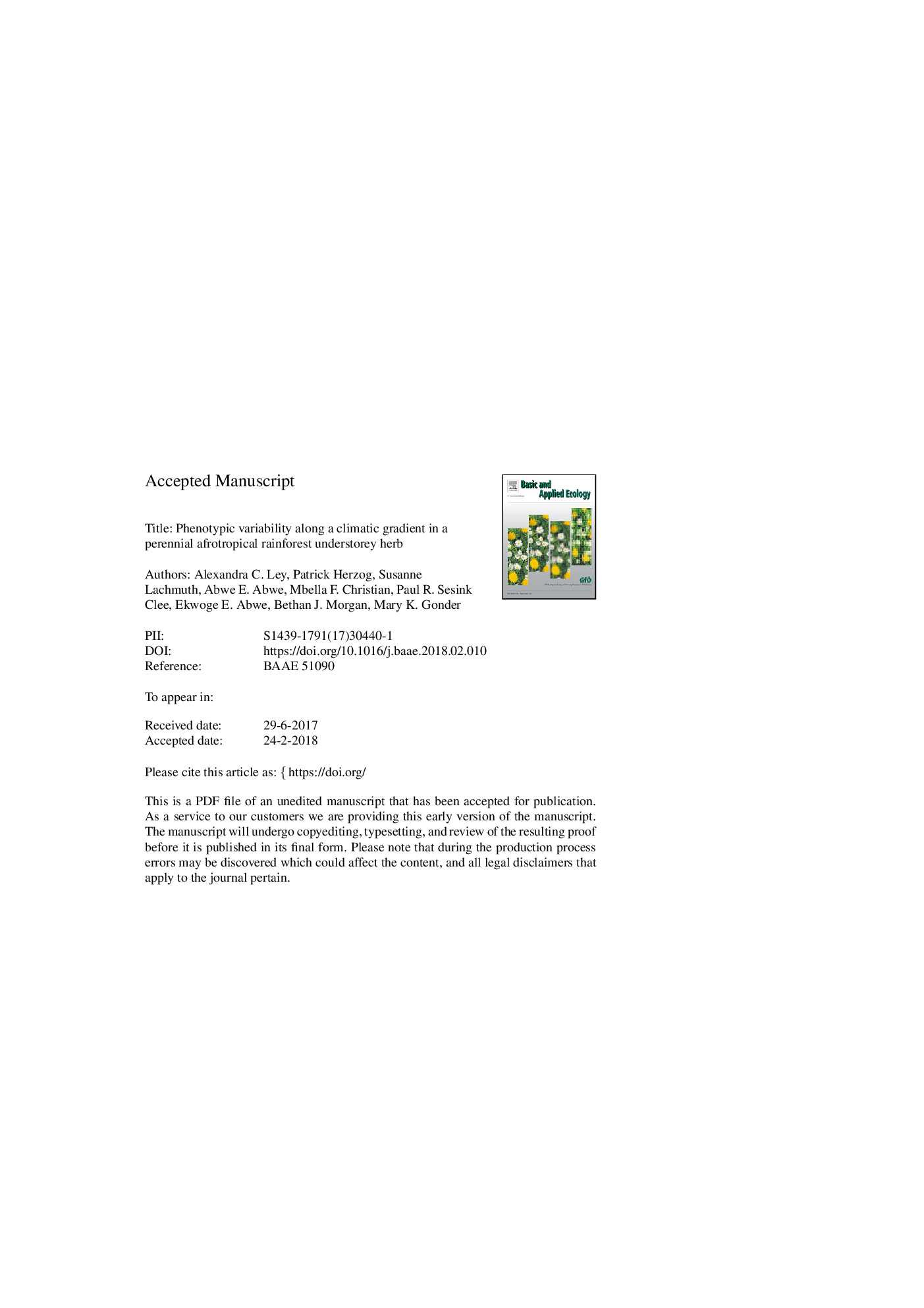| Article ID | Journal | Published Year | Pages | File Type |
|---|---|---|---|---|
| 8847014 | Basic and Applied Ecology | 2018 | 19 Pages |
Abstract
Plants evolved in response to climatic conditions, which shaped their geographic distribution, functional traits and genetic composition. In the face of climatic changes, plants have to react by either genetic adaptation, phenotypic plasticity or geographic range shift. Their reaction potential depends on their phenotypic and genetic variability which can be evaluated through regional scale trait estimates, however, little is known here about tropical African plants. To start filling this gap of knowledge, the aim of this study was to estimate the phenotypic variability in a widespread perennial herb from the understorey of tropical African rainforests: Sarcophrynium prionogonium (Marantaceae). We surveyed 211 individuals from eight populations distributed across four sites in Cameroon covering largely the climatic range of the study species. Fourteen key functional traits were measured monthly for 18 months (2013-2014). Individuals of the study species persisted under a wide range of environmental conditions and there was considerable intraspecific variability within and across populations. Still, plant vegetative growth decreased with dryness. Productivity was positively related to a combination of high temperatures and precipitation and under these favourable conditions strongly shaped by light. Seasonal patterns of flower and fruit development were strongly associated with seasonal rainfall. Thus, the predicted increased dryness in tropical Africa might be disadvantageous for the study species. In the past, plants reacted to such aridification tendencies (e.g. during the Pleistocene glacial cycles) by retracting to moist refugia. The current climatic changes, however, being much faster and larger might provide new challenges.
Related Topics
Life Sciences
Agricultural and Biological Sciences
Animal Science and Zoology
Authors
Alexandra C. Ley, Patrick Herzog, Susanne Lachmuth, Abwe E. Abwe, Mbella F. Christian, Paul R. Sesink Clee, Ekwoge E. Abwe, Bethan J. Morgan, Mary K. Gonder,
